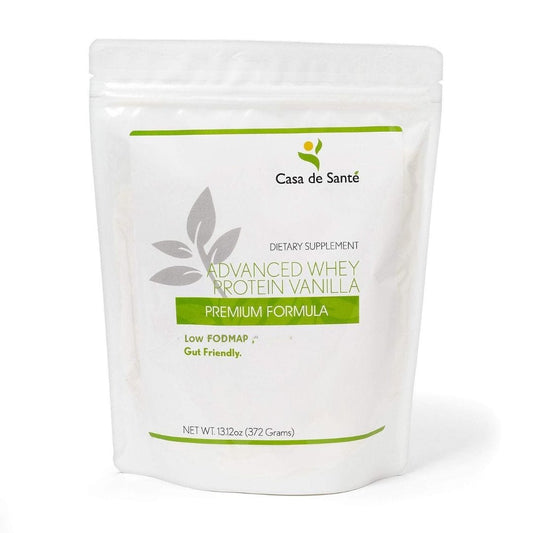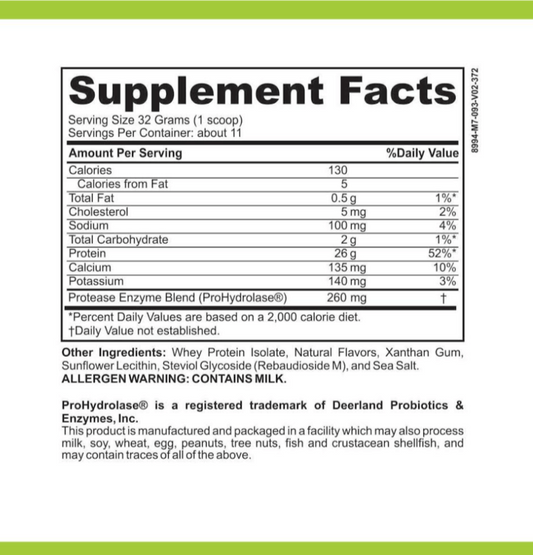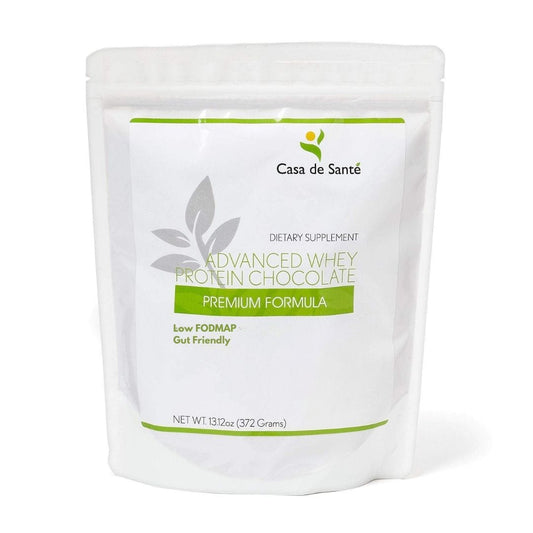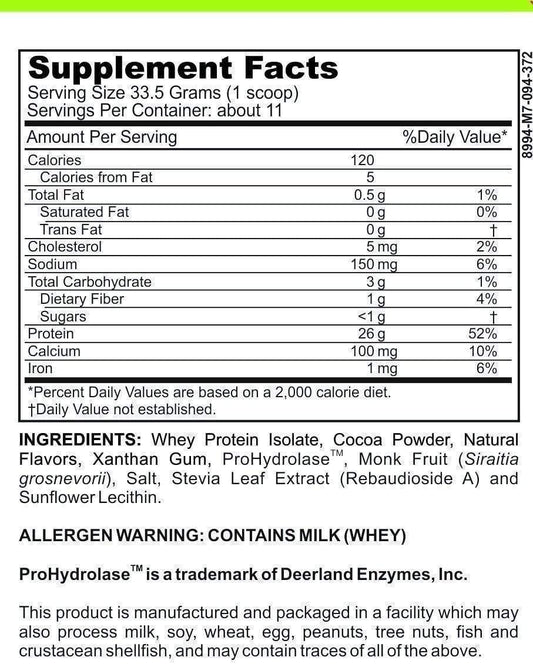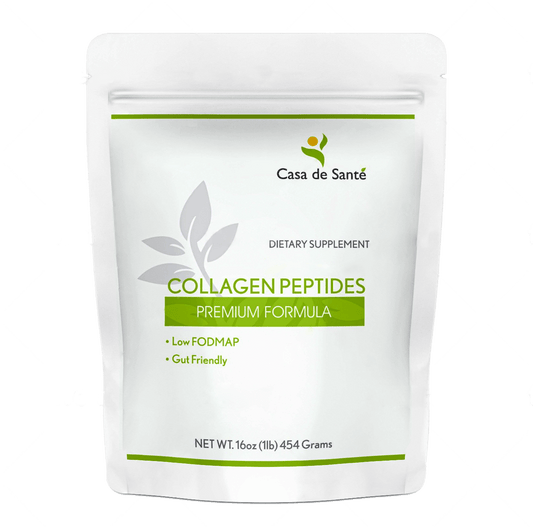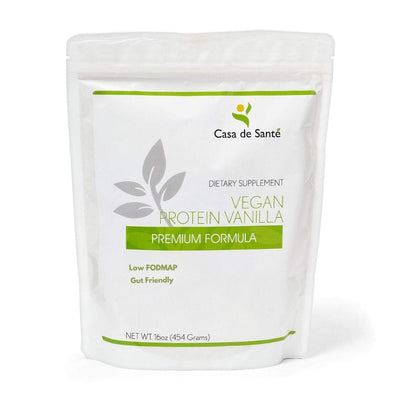Is Balsamic Vinegar Gluten Free
Is Balsamic Vinegar Gluten Free
Balsamic vinegar is a popular condiment that brings a unique depth of flavor to various dishes. However, for individuals following a gluten-free diet, concerns about gluten contamination in balsamic vinegar may arise. In this article, we will explore the gluten content of balsamic vinegar, its production process, ways to identify gluten in balsamic vinegar, and gluten-free alternatives. We will also delve into the health benefits of balsamic vinegar.
Understanding Gluten and Its Effects
Before we delve into the gluten content of balsamic vinegar, let's first understand what gluten is and the effects it can have on those with gluten intolerance or celiac disease.
Gluten is a protein found in various grains, such as wheat, barley, and rye. It provides elasticity to dough and helps it retain its shape. While gluten is harmless to most people, it can cause adverse effects in individuals with gluten intolerance or celiac disease.
Gluten intolerance, also known as non-celiac gluten sensitivity, is a condition where individuals experience symptoms similar to those with celiac disease but do not have the same immune response or intestinal damage. Celiac disease, on the other hand, is an autoimmune disorder where the ingestion of gluten triggers an immune response that damages the small intestine.
What is Gluten?
Gluten is a complex mixture of proteins that gives dough its characteristic stretchiness. It is composed of two main proteins: glutenin and gliadin. Glutenin provides the strength and elasticity to the dough, while gliadin contributes to its extensibility.
When flour is mixed with water, the gluten proteins form a network that traps air bubbles, allowing the dough to rise and giving bread its fluffy texture. This unique property of gluten makes it an essential component in many baked goods.
Common Sources of Gluten
Now that we know what gluten is, let's explore some common sources of gluten. Wheat and its derivatives, such as semolina, spelt, and kamut, are primary sources of gluten. These grains are widely used in the production of bread, pasta, cereals, and other baked goods.
Barley and rye are also gluten-containing grains. Barley is commonly found in malted beverages, such as beer, as well as in soups, stews, and certain types of bread. Rye is often used in bread, crackers, and some alcoholic beverages.
It's important to be cautious when consuming products made from these grains, as they may contain gluten. Reading food labels and looking for gluten-free certifications can help individuals with gluten intolerance or celiac disease make informed choices about their diet.
Symptoms of Gluten Intolerance
Gluten intolerance can manifest in various ways. Some common symptoms include abdominal pain, bloating, diarrhea, fatigue, and headaches. These symptoms can range from mild to severe and may vary from person to person.
In individuals with celiac disease, the immune response triggered by gluten can lead to damage in the lining of the small intestine. This can result in nutrient malabsorption and deficiencies, weight loss, anemia, and even long-term complications if left untreated.
If you suspect that you have gluten intolerance or celiac disease, consulting with a healthcare professional is advisable. They can perform diagnostic tests, such as blood tests and intestinal biopsies, to determine if gluten is the cause of your symptoms and provide appropriate guidance and treatment.
The Production Process of Balsamic Vinegar
Balsamic vinegar has a rich history and is made through a meticulous process. Let's explore the two main types of balsamic vinegar and their production methods.
Traditional Balsamic Vinegar
Traditional balsamic vinegar hails from Italy and is made from cooked grape must. The process begins with carefully selected grapes, usually Trebbiano or Lambrusco varieties, which are crushed to extract the juice or "must." The must is then cooked over an open flame or in large copper cauldrons until it reaches a thick consistency. This cooking process caramelizes the sugars in the grapes, giving the vinegar its distinctive sweet and tangy flavor.
After cooking, the grape must is transferred to wooden barrels, typically made from oak, chestnut, cherry, or mulberry wood. These barrels are of varying sizes and are arranged in a series called a "battery." The must is poured into the largest barrel, known as the "mother barrel," and then gradually transferred to smaller barrels as it ages.
The aging process is a crucial step in the production of traditional balsamic vinegar. The barrels are stored in a special attic known as an "acetaia," where they are exposed to natural temperature fluctuations and seasonal changes. This environment allows the vinegar to develop its complex flavors and aromas over time.
Traditional balsamic vinegar must be aged for a minimum of 12 years, although some varieties are aged for 25 years or more. During this period, the vinegar undergoes a slow fermentation process, transforming the sugars in the must into acetic acid. The longer the vinegar ages, the more concentrated and intense its flavor becomes.
Once the aging process is complete, the vinegar is carefully bottled and sealed with a special cork or wax. Each bottle is labeled with a specific label, indicating its age and quality. Traditional balsamic vinegar is highly valued and regulated by certified consortia, ensuring that only the highest quality products bear the prestigious "Aceto Balsamico Tradizionale" label.
Commercial Balsamic Vinegar
Commercial balsamic vinegar, also known as condiment-grade balsamic vinegar, is more widely available and less expensive than traditional balsamic vinegar. It is typically made by combining grape must with wine vinegar, caramel, or other additives.
The production process for commercial balsamic vinegar begins with the selection of grapes, which are crushed to extract the juice. The grape must is then mixed with wine vinegar, which accelerates the fermentation process and adds acidity to the final product. To enhance the color and sweetness, caramel or other additives may be included.
Unlike traditional balsamic vinegar, which undergoes a lengthy aging process, commercial balsamic vinegar is often aged for a shorter period or not aged at all. This allows for a faster production cycle, making it more readily available to consumers.
While commercial balsamic vinegar may vary in quality, it still offers a delightful tanginess to dishes. It is commonly used as a salad dressing, marinade, or drizzled over fruits and desserts. Some commercial brands also offer flavored balsamic vinegars, infused with ingredients like herbs, fruits, or even chocolate, to add a unique twist to culinary creations.
Whether it's the traditional, meticulously aged balsamic vinegar or the more accessible commercial variety, both types contribute to the diverse world of culinary delights. Their distinct flavors and versatility make them a staple in kitchens around the world.
Identifying Gluten in Balsamic Vinegar
Now that we understand the production process of balsamic vinegar, let's discuss how to identify gluten in balsamic vinegar and make informed choices.
Gluten, a protein found in wheat, barley, and rye, can cause adverse reactions in individuals with gluten intolerance or celiac disease. While balsamic vinegar is typically gluten-free, it's important to be vigilant and ensure that the product you choose is safe for consumption.
Reading Labels for Gluten Content
When searching for gluten-free balsamic vinegar, carefully reading the labels is crucial. Look for products that clearly state they are gluten-free. Some manufacturers voluntarily label their products as gluten-free for the convenience of individuals with gluten intolerance.
However, it's important to note that not all balsamic vinegar brands may have a gluten-free label, even if they are gluten-free. This is because some manufacturers may not go through the certification process or choose not to label their products as gluten-free.
To ensure that a balsamic vinegar is truly gluten-free, it's essential to examine the ingredient list. Look out for any ingredients that may contain gluten, such as malt vinegar or caramel color derived from wheat. If these ingredients are present, it's best to avoid that particular brand of balsamic vinegar.
Gluten-Free Certification for Vinegars
In addition to checking labels, looking out for gluten-free certification logos can provide further assurance of a product's gluten-free status. Third-party certifications ensure that products have undergone rigorous testing and meet established gluten-free standards.
One of the most recognized gluten-free certifications is the "Certified Gluten-Free" logo from the Gluten-Free Certification Organization (GFCO). This logo indicates that the product has been tested and verified to contain less than 10 parts per million (ppm) of gluten, which is the threshold considered safe for individuals with celiac disease.
Other reputable gluten-free certifications include the "Gluten-Free" logo from the Gluten Intolerance Group (GIG) and the "Certified Gluten-Free" logo from the Canadian Celiac Association (CCA). These certifications provide consumers with confidence in the gluten-free status of the balsamic vinegar they are purchasing.
It's important to note that while gluten-free certifications provide an extra level of assurance, not all gluten-free products carry these logos. Some smaller producers may not have gone through the certification process due to various reasons, such as cost or limited resources. In such cases, it's advisable to reach out to the manufacturer directly to inquire about their gluten testing procedures.
By being diligent in reading labels and looking out for gluten-free certifications, individuals with gluten intolerance or celiac disease can confidently enjoy balsamic vinegar without worrying about potential gluten contamination.
Gluten-Free Alternatives to Balsamic Vinegar
If you're following a gluten-free diet or simply looking for alternatives to balsamic vinegar, there are a few options that can complement your dishes.
When it comes to gluten-free alternatives to balsamic vinegar, the possibilities are endless. Let's explore a couple more options that can add a delightful twist to your culinary creations.
Apple Cider Vinegar
Apple cider vinegar, made from fermented apple juice, offers a slightly sweet and tangy flavor. It can be used as a substitute for balsamic vinegar in salad dressings, marinades, and sauces.
Not only does apple cider vinegar provide a unique taste to your dishes, but it also boasts several health benefits. It is known to aid digestion, support weight loss, and even help regulate blood sugar levels.
Imagine drizzling a homemade apple cider vinegar dressing over a fresh green salad, topped with crisp apples, walnuts, and crumbled goat cheese. The combination of flavors will leave your taste buds dancing with joy.
Red Wine Vinegar
Red wine vinegar, crafted from fermented red wine, possesses a bold and robust flavor profile. It adds depth to dressings, glazes, and roasted vegetables.
Did you know that red wine vinegar is not only gluten-free but also packed with antioxidants? These powerful compounds help protect your cells from damage caused by harmful free radicals.
Picture this: you're hosting a dinner party and serving a succulent roasted chicken. Instead of using balsamic vinegar, you decide to create a mouthwatering glaze using red wine vinegar, honey, and Dijon mustard. The result is a perfectly caramelized and flavorful dish that will impress your guests.
Now that you've discovered a couple of gluten-free alternatives to balsamic vinegar, it's time to get creative in the kitchen. Experiment with different flavors and combinations to find your favorite substitute. Whether you choose apple cider vinegar or red wine vinegar, your taste buds will thank you for the exciting culinary journey.
The Health Benefits of Balsamic Vinegar
Balsamic vinegar not only adds flavor to dishes but also offers a range of potential health benefits.
Nutritional Value of Balsamic Vinegar
Balsamic vinegar is low in calories and fat, making it a healthier option compared to some other condiments. It also contains small amounts of essential vitamins and minerals, including vitamin C, iron, and calcium.
Potential Health Benefits of Balsamic Vinegar
Balsamic vinegar is rich in antioxidants, which help protect the body against oxidative stress. Some studies suggest that consuming moderate amounts of balsamic vinegar may have potential benefits for heart health, digestion, and blood sugar control.
While balsamic vinegar itself does not contain gluten, it's essential to be cautious regarding potential cross-contamination in manufacturing or storage processes. Always read labels, look for gluten-free certifications, and consult with healthcare professionals if you suspect gluten intolerance or celiac disease. Whether you're enjoying balsamic vinegar or exploring gluten-free alternatives, these flavorful condiments can elevate your culinary creations while keeping your dietary needs in mind.









